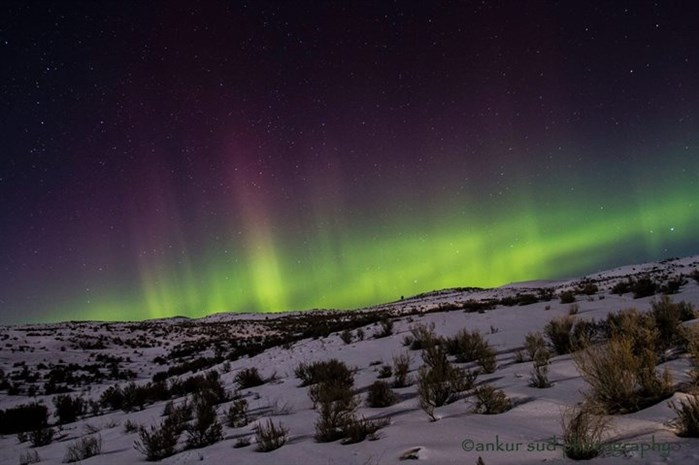
The northern lights were visible near Kamloops on Feb. 8.
Image Credit: Ankur Sud Photography via Facebook
September 11, 2014 - 12:57 PM
5 TIPS FOR BETTER PHOTOS
THOMPSON-OKANAGAN - If you’re like many people out there you’d love to grab some amazing pictures of the night sky, but aren’t sure where to start.
Whether you're looking to capture the auroras that shimmer and glow in a magnificent show or you're looking to get a great shot of that full moon, we’ve put together a quick guide to help you get more out of your photos.
Typically the best place to view the northern lights is at latitudes above 55 degrees north (which would be a little further north of Prince George) and between the hours of 10 p.m. to 2 a.m. in the months of October through March. But every once in a while we get the treat of seeing the show in other months at lower latitudes as well.
Full moons and lunar eclipses happen regularly but follow a more predictable pattern, making it easier to plan a photo shoot.
Some key tips in getting the most out of your photo shoot:
Prepare for the weather, wear warm clothes and layer in cooler weather.
Make sure you are well away from ambient light of the city, which can obscure most aurora displays and will detract from most other night photography as well.
Move quickly. The auroras can move fast and sometimes don’t last very long. You won’t know it’s over until it’s over, and then it’s too late to get that great photo.
Use a tripod with either a timer or a remote to reduce camera shake (also be sure to block it from the wind as much as possible.)
Wide angle lenses are best for capturing as much of the sky as possible but telephoto lenses are recommended for close up moon photography.
Remove filters to avoid distortion.
Camera settings (set as much of these as possible beforehand, in the warmth of your vehicle):
Shoot in RAW if possible.
Use the highest ISO possible that will still provide a good quality (1600-6400 on newer SLR cameras, 200-800 on older models.)
For capturing auroras or a wide starscape, set the focus on your lens to manual and set to infinity.
Set exposure mode to manual.
Set a wide aperture mode (as low an f-stop as you can get sharp results with.)
You will have to adjust your shutter speed to the speed of the auroras, usually between 10-30 seconds but sometimes you may need to go as low as one second.
To contact a reporter for this story, email Jennifer Stahn at jstahn@infonews.ca or call 250-819-3723. To contact an editor, email mjones@infonews.ca or call 250-718-2724.
News from © iNFOnews, 2014